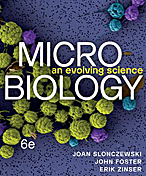User:S4288871: Difference between revisions
| Line 32: | Line 32: | ||
Aerobe/anaerobe, habitat (location in the oral cavity, potential other environments) and microbe/host interactions. | Aerobe/anaerobe, habitat (location in the oral cavity, potential other environments) and microbe/host interactions. | ||
P. gingivalis is an obligate anaerobe that is most commonly associated with the human oral cavity. However, it has also been identified | P. gingivalis is an obligate anaerobe that is most commonly associated with the human oral cavity. It is recognised as as a key-stone species in the pathogenesis of periodontal disease, and therefore its main niche within the oral cavity is on and within the periodontum (tissues that surround the teeth) [ref.]. It has also been shown to survive and replicate within the environmetal amoeba Acanthamoeba castellani, suggesting a possible environmental reservoir [ref.]. | ||
However, it has also been identified | |||
==Pathology== | ==Pathology== | ||
Revision as of 06:11, 11 September 2016
Louise Chan Bench E 31082016 [1]
Classification
Higher order taxa
Bacteria – Bacteroidetes – Bacteroidia– Bacteroidales – Porphyromonadaceae – Porphyromonas
Species
Species: P. gingivalis
Type Strain: strain 2561 = ATCC 33277= CCUG 25893 = CCUG 25928 = CIP 103683 = DSM 20709 = JCM 12257 = NCTC 11834
Description and significance
Porphyromonas gingivalis was initially discovered in 1980 and classified asBacteriodes gingivalis. Subsequently, this organism was reclassified in 1988 due to its marked difference in chemical and biochemical properties from Bacteriodes.
Give a general description of the species (e.g. where/when was it first discovered, where is it commonly found, has it been cultured, functional role, type of bacterium [Gram+/-], morphology, etc.) and explain why it is important to study this microorganism. Examples of citations [1], [2]
Genome structure
Select a strain for which genome information (e.g. size, plasmids, distinct genes, etc.) is available.
Cell structure and metabolism
Cell wall, biofilm formation, motility, metabolic functions.
Ecology
Aerobe/anaerobe, habitat (location in the oral cavity, potential other environments) and microbe/host interactions.
P. gingivalis is an obligate anaerobe that is most commonly associated with the human oral cavity. It is recognised as as a key-stone species in the pathogenesis of periodontal disease, and therefore its main niche within the oral cavity is on and within the periodontum (tissues that surround the teeth) [ref.]. It has also been shown to survive and replicate within the environmetal amoeba Acanthamoeba castellani, suggesting a possible environmental reservoir [ref.].
However, it has also been identified
Pathology
Do these microorganisms cause disease in the oral cavity or elsewhere?
Application to biotechnology
Bioengineering, biotechnologically relevant enzyme/compound production, drug targets,…
Current research
Summarise some of the most recent discoveries regarding this species.
References
References examples
- ↑ MICR3004
This page is written by Louise Chan for the MICR3004 course, Semester 2, 2016
